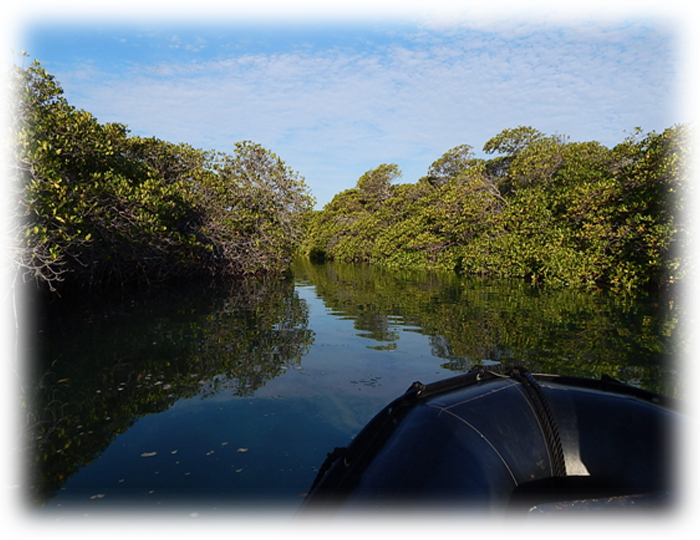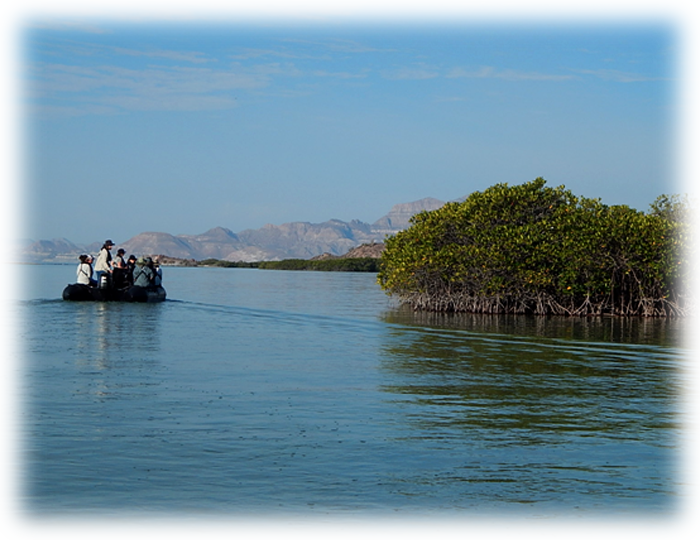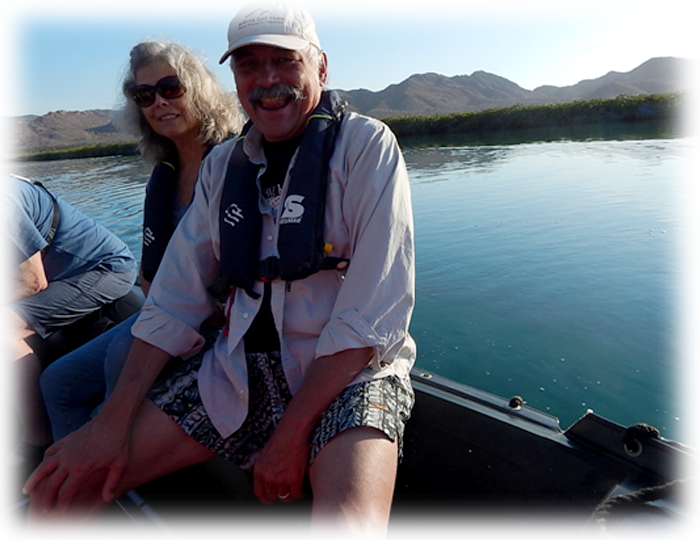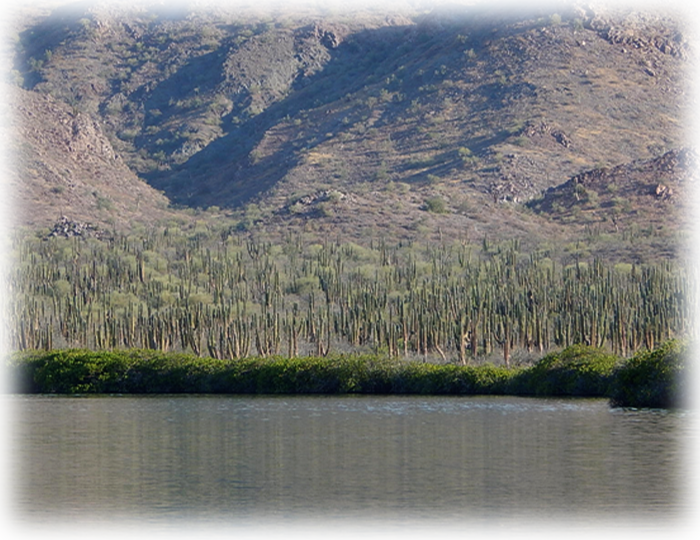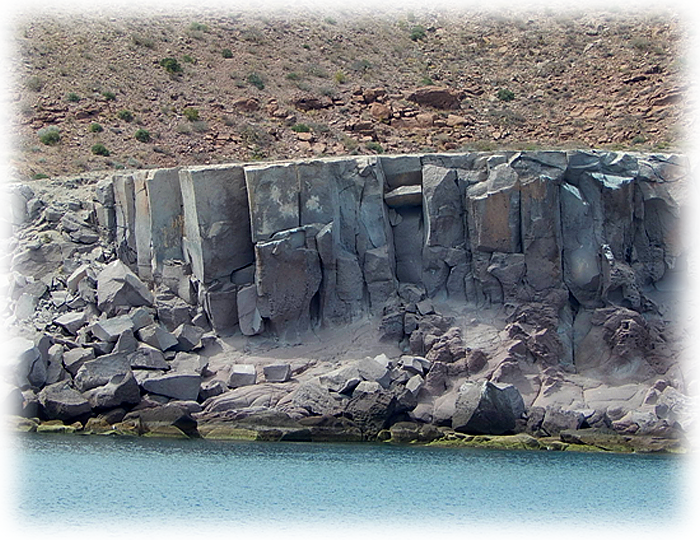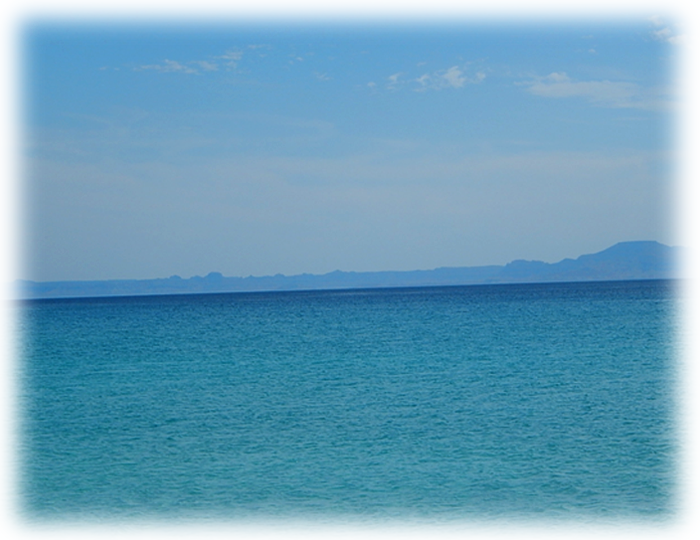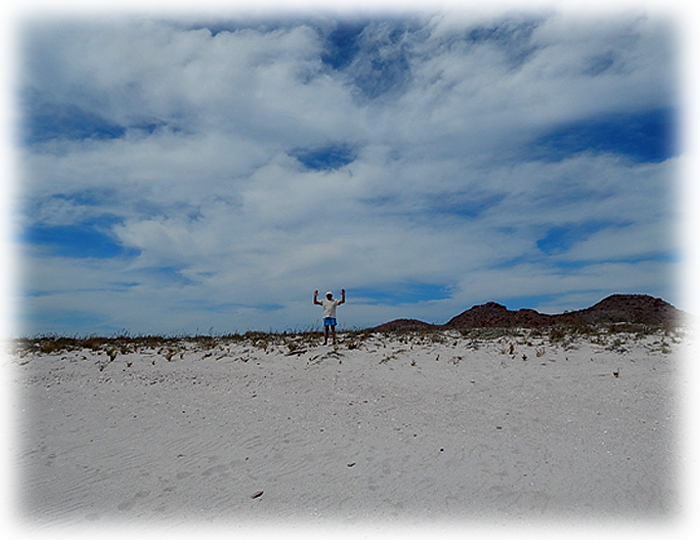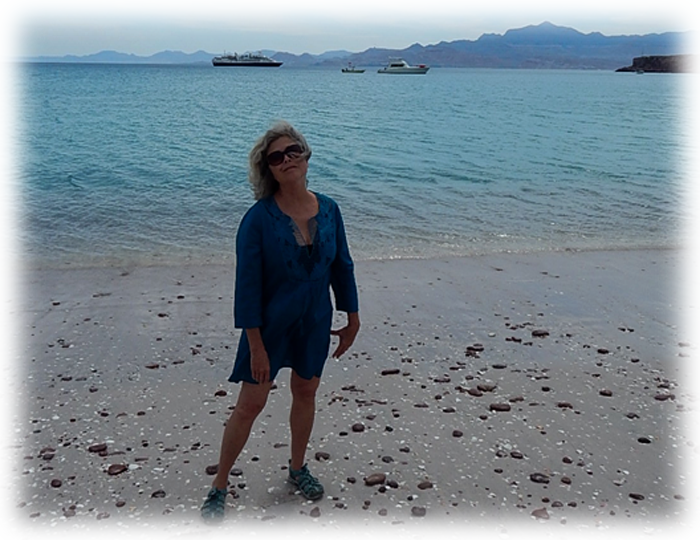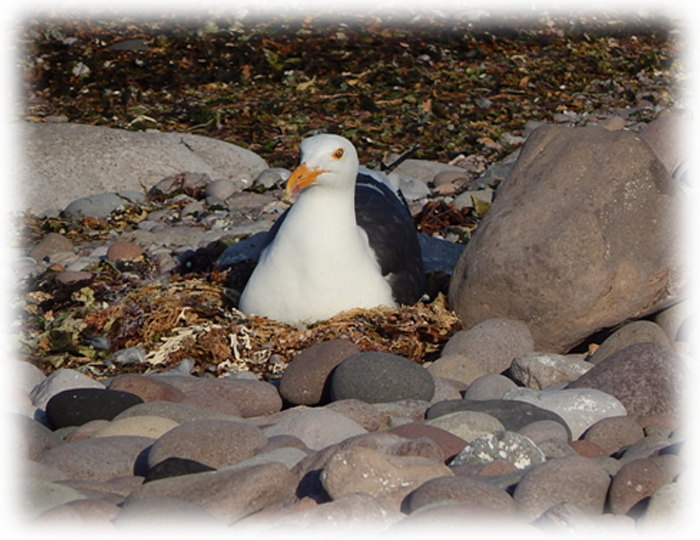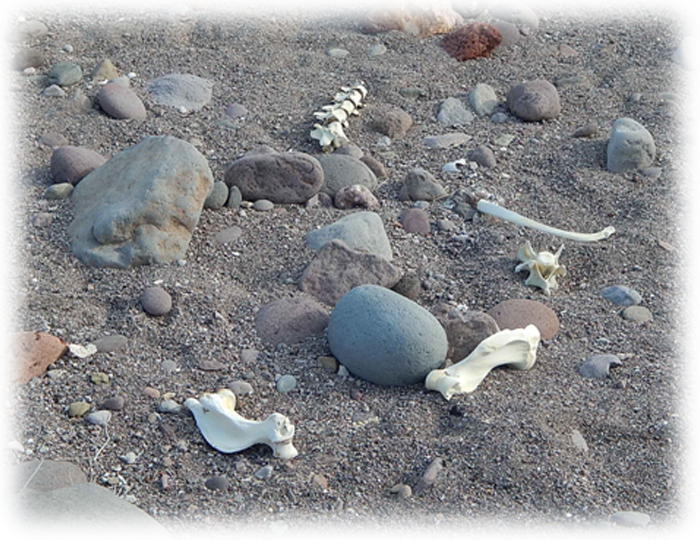We have left the oldest river to come to the youngest sea.
This morning, early, the harsh coast peachy with dawn, we set out in the little rubber dingy for the mangrove forest of Isla San Jose.
A strange green environment: shallow clear water running through the greenery, the flash of flying fish, an occasional sea turtle spotted, one huge sea lion stretching in the distance.
The barren mainland, ridged across the horizon, made the morning look as though we were floating in a lagoon beside the moon.
Later, Rick went off for the deep-water snorkel to swim in the currents with sea lions. I stayed behind. While I love, love being in the water, I find the less encumbrance, the better. Still wish we could swim off our New River beach unbound by suits.
the 'elephant rock'
Yesterday morning was ‘at sea’ where Rick attended a gripping lecture on “plate tectonics” and participated in a lively discussion afterwards about acoustic wave propagation in layered media, while I read A TALE FOR THE TIME BEING*. Then we both attended a lecture (“Baja Blue”) by “The Crocodile Dundee” of Baja. He showed great photos and videos of his folks swimming with the whales, several species (& I’m beginning to think those videos might be the only whales we see), sharks and mantas. He spoke of the movement to protect this incredible natural preserve. His group trains former fishermen to be guides, trade in the hook for the camera.
In the afternoon we dingy-ed onto the rocky, steep beach of Isla Santa Catalina where I swam and Rick snorkeled by the ‘elephant rock.’
Back to today (Thursday), we had a mid afternoon dingy drop off to a stunning white sand rimmed cove. We swam and swam in the clear turquoise water, figuring it to be our last swim.
After a fine dinner, we are scurrying about to pack for our overnight (bus to train and 6 hour train ride) to the Copper Canyon.
It is amazing that we are about the mid-age range for the ship (is that possible?) but accommodations and support make it possible for the elderly and really not spry adventurers to snorkel and hike and completely experience this adventure. The old, deep pocketed and well traveled. Another planet away from Giles County.
*Tuesday I finished (Mary North’s recommendation) EXIT WEST, so good. Rick read it in a couple sittings and, after that and YOU’VE GOT TO BE KIDDING MR. FEYNMAN; he is onto a 2nd collection of Annie Proux stories.


